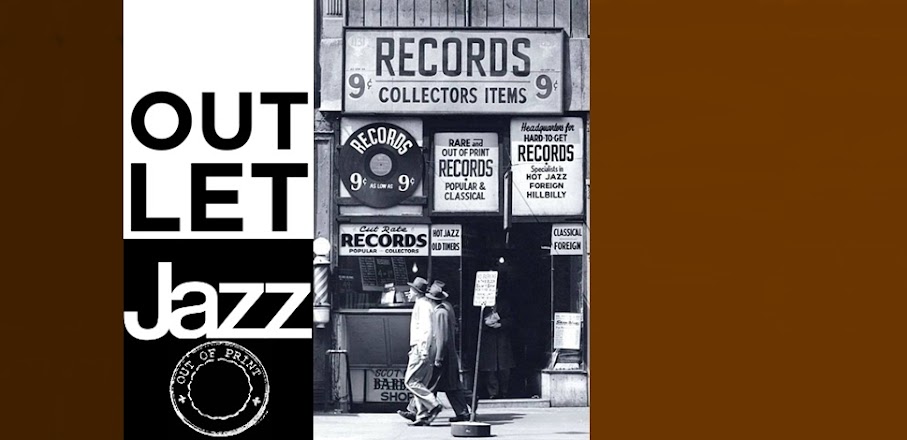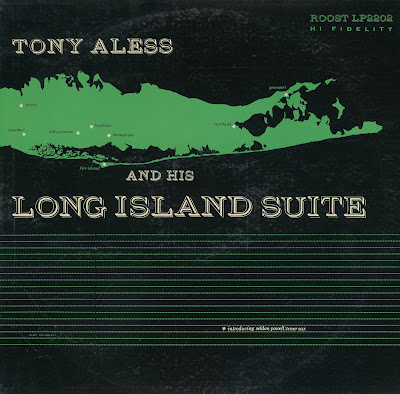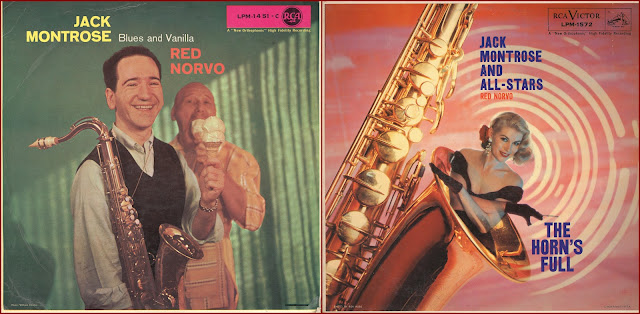In the previous post, about the so-called "Cool Gabriels", we can checked out Nat Hentoff's review. While he didn't completely dismiss them, he did raise a few eyebrows — mainly pointing out that some of the solos felt a bit too restrained:
"The solos are also of a consistently controlled and assured level while the ensemble playing is sharp and alive. Yet there is little here that really clutches the emotions, little that is nakedly beneath the surface. It's like a good issue of a well-produced slick magazine", Hentoff wrote.
He then took the chance to recommend another trumpet session — one he clearly thought packed more emotional punch:
"For a more earthy, more deeply wailing trumpet meeting, try Savoy's Top Brass under Ernie Wilkins' direction", he said.
And knowing how tough Hentoff could be when it came to handing out stars, it's worth paying attention. Top Brass actually got the full five stars from him — the highest rating in Down Beat. So, let's take his word for it and give Top Brass the spotlight it deserves.
Ernie Wilkins Presents
Top Brass
Featuring Five Trumpets
Top Brass is a modern and expanded reincarnation of several of the Keynote sessions in the '40s when a pride of several lions on one particular instrument was assembled to exchange ideas and styles. In this case, five trumpeters (Ernie Royal, Idress Su-lieman, Joe Wilder, Ray Copeland, and Donald Byrd) blow in various Ernie Wilkins’ settings backed without flaw by Hank Jones, Kenny Clarke, and Wendell Marshall. Three of the originals are by Ernie; one he co-wrote with Earl Van Riper, and "Dot's What" is by Johnny Mandel. The lines are sprightly and Ernie, who arranged all, is his usual spare, swinging, estimable self.
On the first five, the hornmen alternate in the various chairs from lead on. The complete notes identify all positions and solos, and provide good, concise biographical backgrounds (and some spelling mistakes). Most of the second side is devoted to ballad explorations by each trumpeter, and the comparison of approaches is illuminating and enjoyable all down the line. Note particularly Joe Wilder's "Willow Weep For Me", one of the most movingly lyrical solos ever recorded. On the up-tempos, everybody swings and each has several individual statements of worth to make. The recorded sound is appropriately bright. All hail to Savoy and Ozzie Cadena for thinking this one up, and to Mr. Wilkins and his friends for making it work so excitingly.
*Nat Hentoff (Down Beat, April 4, 1956)
Although he was a better than average saxophonist with Count Basie, by the time of these 1950s sessions for Savoy, Ernie Wilkins was working exclusively as an arranger and composer. Most of the music within this compilation comes from a 1955 session with trumpeters Donald Byrd, Ray Copeland, Ernie Royal, Idrees Sulieman, and Joe Wilder, pianist Hank Jones, bassist Wendell Marshall, and drummer Kenny Clarke. Four of the first five tracks are swinging originals by Wilkins, and there's also an obscure Johnny Mandel blues, "Dot's What." The remaining music from the first session is a ballad medley where each trumpeter is featured in turn playing a personal favorite, all of which have become time-tested standards. If there's any complaint about this studio date at all, it is the excess reverb used at times, which is surprising due to Rudy Van Gelder's usually impeccable sound. The bonus tracks are from another Wilkins-led session from 1957; trumpeters Art Farmer, Charlie Shavers, Emmett Berry, and Harold "Shorty" Baker join Royal, with Don Abney taking over on piano and Bobby Donaldson on drums. Both of Wilkins' originals, "Blues in 6/4" and "Trumpets All Out," are enjoyable even if they never became widely known. *Ken Dryden*
Ernie Wilkins wrote the lines for this collection of five trumpeters — Joe Wilder, Ernie Royal, Ray Copeland, Indres Sulieman and Donald Byrd — and rhythm — Hank Jones, Wendell Marshall and Kenny Clark. Savoy was kind enough to carefully note each solo and section position of each trumpeter on each selection. All of it is rather moderate modern, mostly on the boppy kick (some of the solos are less than that). But over-all it's an interesting, certainly a swinging, album; five tracks have section work and then individual solos while the other side features one ballad apiece. Aside from Donald Byrd, who is overshadowed here, it would be hard to finally pick among the four, especially on the ballads, for which and for Hank's comping, the album draws its major favor. *Metronome • Music USA (June, 1956)*
1 - 58 Market Street
(Ernest Wilkins, Earl Van Riper)
2 - Trick Or Treat
(Ernest Wilkins)
3 - Speedway
(Ernest Wilkins)
4 - Dot's What
(Johnny Mandel)
5 - Top Brass
(Ernest Wilkins)
Ballad Medley:
6 - Willow Weep For Me
(Ann Ronell)
7 - Imagination
(Johnny Burke, Jimmy Van Heusen)
8 - It Might As Well Be Spring
(Oscar Hammerstein II, Richard Rodgers)
9 - The Nearness Of You
(Hoagy Carmichael, Ned Washington)
10 - Taking A Chance On Love
(Vernon Duke, Ted Fetter, John Latouche)
11 - Blues In 6/4
(Ernest Wilkins)
12 - Trumpets All Out
(Ernest Wilkins)
#1 to #10: from the album Top Brass Featuring 5 Trumpets (Savoy Records MG 12044)
Donald Byrd, Ray Copeland, Ernie Royal, Idrees Sulieman, Joe Wilder (trumpets);
Hank Jones (piano); Wendell Marshall (bass); Kenny Clarke (drums).
Recorded at Rudy Van Gelder Studios,Hackenshack, New Jersey, November 8, 1955
#11 and #12: from the album Trumpets All Out (Savoy Records MG 1209)
Art Farmer, Ernie Royal, Charlie Shavers, Emmett Berry, Harold Baker (trumpets);
Don Abney (piano); Wendell Marshall (bass); Bobby Donaldson (drums).
Recorded at Rudy Van Gelder Studios,Hackenshack, New Jersey, January 15, 1956













